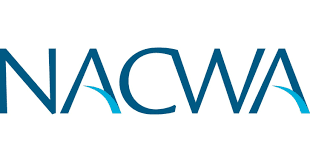Clean Water Public Utilities Predict Faster Development of Renewable Energy Sources with More Access to Greenhouse Gas Reduction Fund

National Association of Clean Water Agencies issues comments to EPA, detailing opportunities to reduce carbon emissions associated with wastewater treatment and modernization for utilities to mitigate climate impacts and become more resilient.
WASHINGTON, D.C. – The National Association of Clean Water Agencies (NACWA) today unveiled detailed recommendations to U.S. EPA, regarding the $27 billion in the Inflation Reduction Act’s (IRA) Greenhouse Gas Reduction Fund (GHGRF), including insights on how the financing is expected to provide greater flexibility for NACWA’s members to prioritize and advance clean energy projects faster, greater potential for clean water utilities to meet growing water affordability challenges for low-income and disadvantaged communities, and calls for EPA to ensure that small and medium-sized clean water utilities be made eligible for the new funding.
NACWA’s comments on the GHGRF examined a wide array of opportunities for reducing carbon emissions through new federal investments, including climate mitigation, clean energy projects, green infrastructure, and meeting the demands of operational and workforce challenges across the clean water sector. NACWA praised the Fund’s $8 billion in grants designed to support investments in low-income and disadvantaged communities that reduce or avoid greenhouse gas emissions and other forms of air pollution.
NACWA Chief Advocacy & Policy Officer Nathan Gardner-Andrews, said: “NACWA members across the country have a lot at stake with EPA’s administration of the Greenhouse Gas Reduction Fund. We know that drinking water and clean water services represent more than 10 percent of global GHG emissions, with wastewater treatment alone contributing roughly 3.5 percent of all emissions. In terms of the global contributions to GHG emissions, these figures jump off the page for non-experts looking at our sector and underscore the essential work of our members conducting wastewater management as an energy-intensive process, making them prime candidates to receive funding from the GHGRF.”
EPA will determine which organizations and how many will be eligible to receive funding from the $20 billion available through the GHGRF “general fund.” An additional $7 billion will go directly to states, territories, local governments and tribal governments. As part of its comments, NACWA is urging EPA to grant investments for clean water utility members and municipalities serving low-income and disadvantaged communities.
Excerpts from NACWA’s comments on RFI GHGRF included the key messages below:
- NACWA’s members are public wastewater utilities that could leverage the GHGRF funds to reduce GHG emissions by increasing their energy efficiency and developing their renewable energy sources.
- Since many energy-related projects have a long pay-off period – and utilities’ primary obligation is meeting their requirements for wastewater treatment under the Clean Water Act – these projects may be a lower priority for utilities. The GHGRF could therefore be vital to realizing the greenhouse gas reduction opportunities and the ancillary environmental and community benefits available through clean water utility energy projects.
- NACWA urges EPA to specifically consider how municipal, not-for-profit clean water utilities can engage in GHGRF funding as the Agency develops its guidance.
- Types of projects include construction or improvement of anaerobic digesters for biosolids to increase production of biogas, which can be used directly by the utility, used as natural gas by external entities, or used to generate electricity
Nathan Gardner-Andrews continued: “Clean energy development is critical for public clean water utilities and their efforts to become more climate resilient. There are lots of excellent opportunities in the GHGRF for public clean water agencies, provided EPA structures the Fund in such a way that maximizes the ability of utilities to access them. NACWA looks forward to working with EPA to ensure our members will greatly benefit from greater access to GHGRF investments going forward.”
ABOUT NACWA
For over 50 years, the National Association of Clean Water Agencies (NACWA) has been the nation’s recognized leader in legislative, regulatory, legal and communications advocacy on the full spectrum of clean water issues. NACWA represents public wastewater and stormwater agencies of all sizes nationwide. Our unique and growing network strengthens the advocacy voice for the public clean water sector and helps advance policies to provide affordable and sustainable clean water for all. Our vision is to advance sustainable and responsible policy initiatives that help to shape a strong and sustainable clean water future. For more information, visit us at www.nacwa.org.
CONTACT: Patrick Mitchell for more information or to arrange interviews with NACWA and its members at [email protected].


